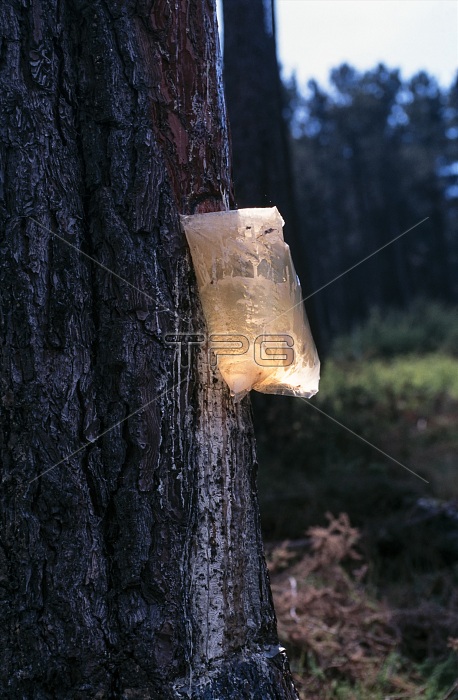
Maritime pine (Pinus pinaster), resin extraction with plastic bags. Resin is usually collected by causing minor damage to the tree by making a hole far enough into the trunk to puncture the vacuoles, to let sap exit the tree, known as tapping, and then letting the tree repair its damage by filling the wound with resin. This usually takes a few days. Then, excess resin is collected.Turpentine is the volatile oil distilled from pine resin, which itself is obtained by tapping trees of the genus Pinus. The solid material left behind after distillation is known as rosin. Both products are used in a wide variety of applications. Traditionally, turpentine has been employed as a solvent or cleaning agent for paints and varnishes and this is still often the case today, particularly in those countries where the pine trees are tapped. There are also some specialized uses, in the pharmaceutical industry, for example. Portugal accounts for the greater part of world trade in gum turpentine but volumes have decreased in recent years as a result of falling resin production.The pine resin is antimicrobial and works to protect the plant from disease. Those same components can help to fight bacteria and fungus on our bodies, as well. Portugal
| px | px | dpi | = | cm | x | cm | = | MB |
Details
Creative#:
TOP24713423
Source:
達志影像
Authorization Type:
RM
Release Information:
須由TPG 完整授權
Model Release:
No
Property Release:
No
Right to Privacy:
No
Same folder images:
Restriction:
Sale prohibited for poster and Fine art print worlwide

 Loading
Loading